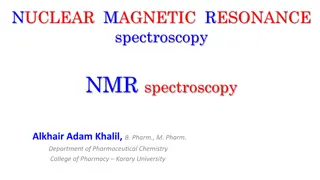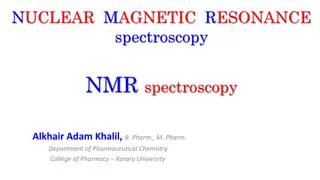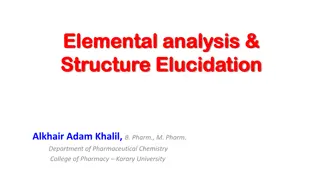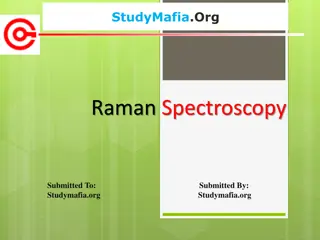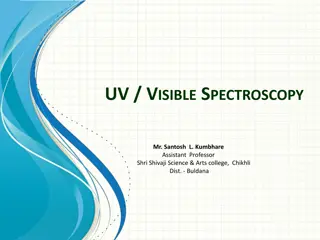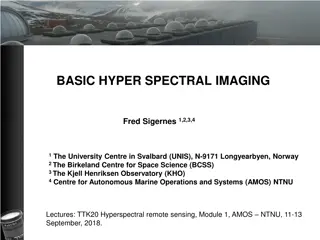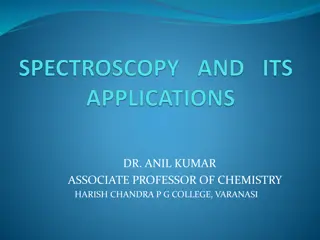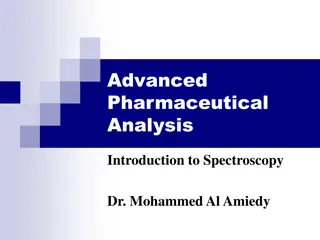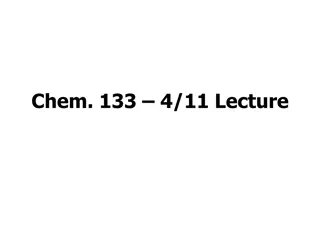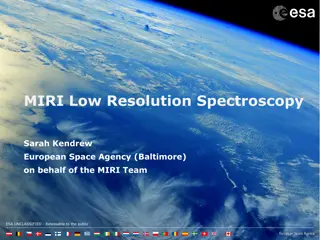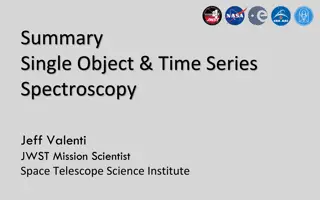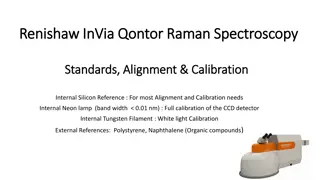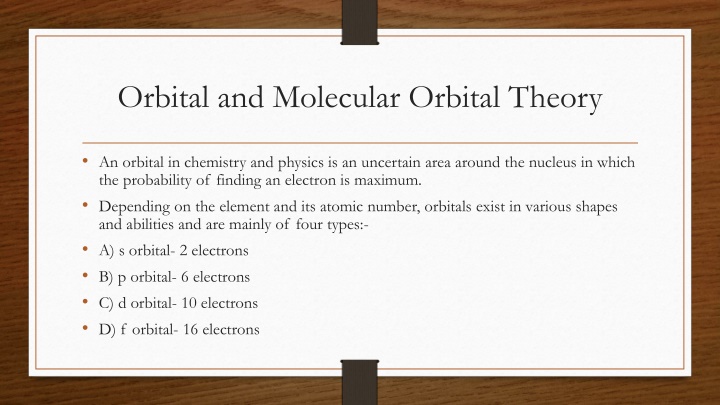
Molecular Orbital Theory and FTIR Spectroscopy
Learn about atomic and molecular orbitals, their shapes, and the concept of Highest Occupied Molecular Orbital (HOMO) and Lowest Unoccupied Molecular Orbital (LUMO). Explore the advantages of Fourier Transform Infrared (FTIR) spectroscopy over dispersive IR techniques.
Download Presentation

Please find below an Image/Link to download the presentation.
The content on the website is provided AS IS for your information and personal use only. It may not be sold, licensed, or shared on other websites without obtaining consent from the author. If you encounter any issues during the download, it is possible that the publisher has removed the file from their server.
You are allowed to download the files provided on this website for personal or commercial use, subject to the condition that they are used lawfully. All files are the property of their respective owners.
The content on the website is provided AS IS for your information and personal use only. It may not be sold, licensed, or shared on other websites without obtaining consent from the author.
E N D
Presentation Transcript
Orbital and Molecular Orbital Theory An orbital in chemistry and physics is an uncertain area around the nucleus in which the probability of finding an electron is maximum. Depending on the element and its atomic number, orbitals exist in various shapes and abilities and are mainly of four types:- A) s orbital- 2 electrons B) p orbital- 6 electrons C) d orbital- 10 electrons D) f orbital- 16 electrons
These orbitals can be broadly classified into atomic and molecular orbitals depending on whether the positions and energies of electrons are being described for atoms or molecules. So, a molecular orbital is a particular spatial distribution of electrons in a molecule which is associated with a specific orbital energy. As is obvious from the name, the molecular orbital is not restricted on a single atom but rather it extends over the whole molecule. Thus, the molecular orbital theory is a delocalized approach to bonding.
In the MO theory, we first draw an energy level diagram by listing the MOs in the increasing order of their energies. Then we fill the number of valence electrons using Pauli principle (each MO can occupy maximum 2 electrons with opposite spins). After the combination of individual atomic orbitals, MOs with both lower and higher energies than the individual atomic orbitals are formed. The former are called as bonding MOs while the latter are called as antibonding MOs.
HOMO and LUMO HOMO stands for Highest Occupied Molecular Orbital and it is the highest energy MO that has any electrons in it. LUMO stands for Lowest Unoccupied Molecular Orbital and it is the next highest energy orbital which is empty. LUMO is the lowest energy place to put any electron.
Disadvantages of Dispersive IR In this type of IR spectrophotometry, gratings are used as a monochromator to filter out a particular wavelength which is needed. Although dispersive IR spectroscopy paved the way for Infrared spectrophotometry to be used, it has now become obsolete due to certain disadvantages like:- A) Poor resolution B) Each wavelength is scanned one at a time C) Less number of samples analysed/ Low throughput D) Low sensitivity
Advantages of FTIR over dispersive IR FTIR offers three main advantages over dispersive IR. They are:- A) Multiplex advantage/Fellgett s advantage B) Throughput advantage/Jacquinot s advantage C) Wavelength accuracy/Conne s advantage
Multiplex Advantage/Fellgetts Advantage This advantage is due to the fact that all wavelengths are scanned simultaneously. The S/N because of this would be greater in FTIR by a factor of M where M is the number of resolution elements. Thus, it would result in faster data collection of an FTIR spectrum.
Throughput Advantage/Jacquinots Advantage FTIR has this advantage because unlike in the monochromator of a dispersive instrument which has entry and exit slits, its interferometer throughput/the number of samples scanned is determined only by the diameter of the collimated beam that comes from the source. Although there is an absence of slits in FTIR, an aperture is needed that controls the convergence of collimated beam in the interferometer.
This aperture is known as a Jacquinot stop. For a particular wavelength and a resolution, this circular aperture allows more amount of light than a slit and thus results in a higher S/N.
Wavelength Accuracy/Connes Advantage FTIR has this advantage because compared to dispersive IR where the wavelength scale/wavelength range is calibrated on the basis of the mechanical movement of diffraction gratings, the wavelength scale/range is calibrated in FTIR with the help of a laser beam of known wavelength. Because of this, the calibration of the wavelength scale/range is much more stable and accurate. As a result of this accurate calibration of the wavelength scale, the resolution of the resulting IR spectrum is increased and it becomes easier to differentiate between adjacent peaks that are too close to each other.
Fluorescence and Phosphorescence Fluorescence and phosphorescence are two mechanisms which emit light. Although sometimes used in conjunction with each other, these two terms do not mean the same thing and both happen differently. In both the cases, electrons absorb energy and emit light when they return to their ground states but fluorescence occurs much more quickly (stops immediately after source is removed) than phosphorescence (lasts for minutes to several hours). In fluorescence, the direction of the electron spin does not change but in phosphorescence, the opposite happens.
Examples of Fluorescence and Phosphorescence

